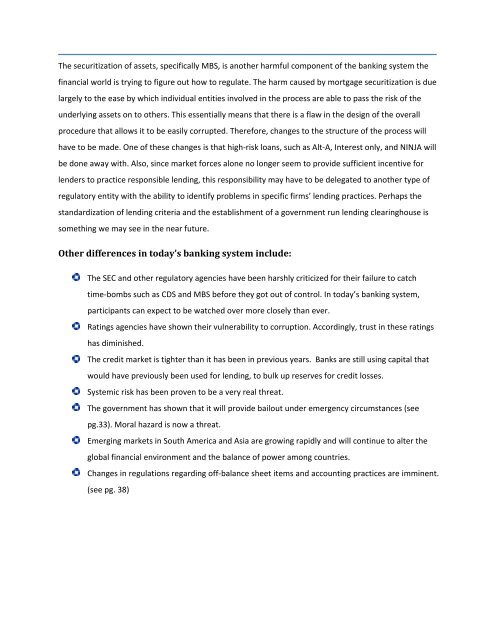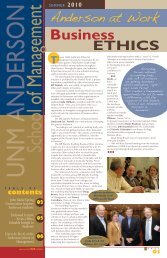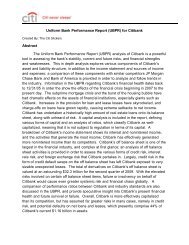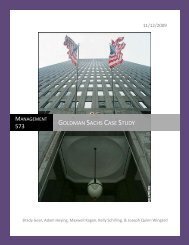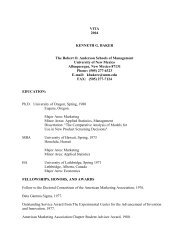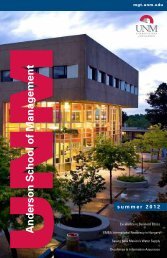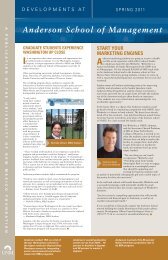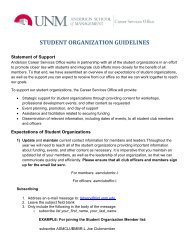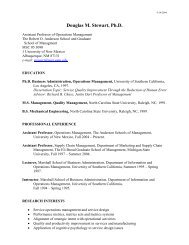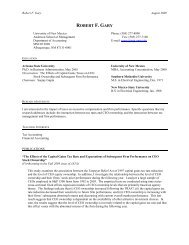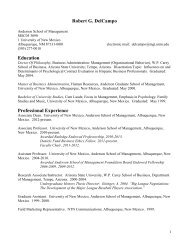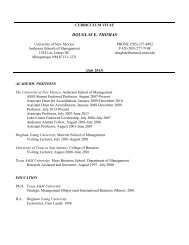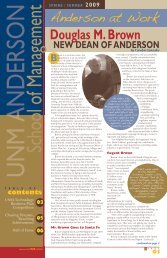Uniform Bank Performance Report - Anderson School of Management
Uniform Bank Performance Report - Anderson School of Management
Uniform Bank Performance Report - Anderson School of Management
Create successful ePaper yourself
Turn your PDF publications into a flip-book with our unique Google optimized e-Paper software.
The securitization <strong>of</strong> assets, specifically MBS, is another harmful component <strong>of</strong> the banking system the<br />
financial world is trying to figure out how to regulate. The harm caused by mortgage securitization is due<br />
largely to the ease by which individual entities involved in the process are able to pass the risk <strong>of</strong> the<br />
underlying assets on to others. This essentially means that there is a flaw in the design <strong>of</strong> the overall<br />
procedure that allows it to be easily corrupted. Therefore, changes to the structure <strong>of</strong> the process will<br />
have to be made. One <strong>of</strong> these changes is that high‐risk loans, such as Alt‐A, Interest only, and NINJA will<br />
be done away with. Also, since market forces alone no longer seem to provide sufficient incentive for<br />
lenders to practice responsible lending, this responsibility may have to be delegated to another type <strong>of</strong><br />
regulatory entity with the ability to identify problems in specific firms’ lending practices. Perhaps the<br />
standardization <strong>of</strong> lending criteria and the establishment <strong>of</strong> a government run lending clearinghouse is<br />
something we may see in the near future.<br />
Other differences in today’s banking system include:<br />
The SEC and other regulatory agencies have been harshly criticized for their failure to catch<br />
time‐bombs such as CDS and MBS before they got out <strong>of</strong> control. In today’s banking system,<br />
participants can expect to be watched over more closely than ever.<br />
Ratings agencies have shown their vulnerability to corruption. Accordingly, trust in these ratings<br />
has diminished.<br />
The credit market is tighter than it has been in previous years. <strong>Bank</strong>s are still using capital that<br />
would have previously been used for lending, to bulk up reserves for credit losses.<br />
Systemic risk has been proven to be a very real threat.<br />
The government has shown that it will provide bailout under emergency circumstances (see<br />
pg.33). Moral hazard is now a threat.<br />
Emerging markets in South America and Asia are growing rapidly and will continue to alter the<br />
global financial environment and the balance <strong>of</strong> power among countries.<br />
Changes in regulations regarding <strong>of</strong>f‐balance sheet items and accounting practices are imminent.<br />
(see pg. 38)


